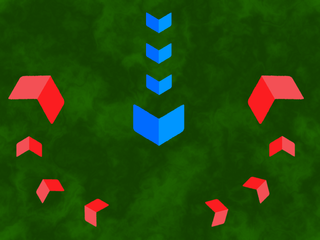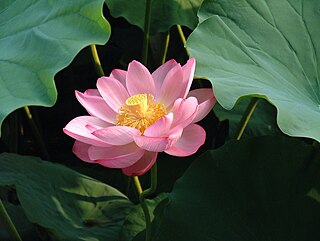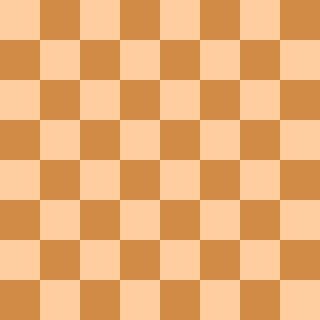Vyuham in classical Indian military science, is the strategic positioning and deploying of an army in such a way that the opponent's force is blunted / thwarted and increases the threat to the opponent. [1] Padmavyuham was the legendary 'positioning' of the kaurava army against the pandava might to trap abhimanyu.

Kaurava is a Sanskrit term for the descendants of Kuru, a legendary king who is the ancestor of many of the characters of the Mahābhārata. The well-known Kauravas are Duryodhana, Dushasana, Vikarna, Yuyutsu and Dussala.

In the Mahabharata, a Hindu epic text, the Pandavas are the five acknowledged sons of Pandu, by his two wives Kunti and Madri, who was the princess of Madra. Their names are Yudhishthira, Bhima, Arjuna, Nakula and Sahadeva. All five brothers were married to the same woman, Draupadi.
Vyuha is strategic placement of available resources of an army at war. It is a formation and derives its name and ways to act and perform according to many things found in nature and in daily use.
In case of the Padma-vyuham, the army formation is in the form of a lotus with strategic placement of the cavalry, footsoldiers, swordsmen, charioteers, elephants, etc., in an attempt to deliver maximum damage to the opposing force as well as protecting the principal participants from the enemy. The lotus formation facilitated and worked on the pattern of opening of petals thereby surrounding more of the enemies and then closing of the petals thereby trapping them and rendering them ineffective.

Nelumbo nucifera, also known as Indian lotus, sacred lotus, bean of India, Egyptian bean or simply lotus, is one of two extant species of aquatic plant in the family Nelumbonaceae. It is often colloquially called a water lily. Under favorable circumstances the seeds of this aquatic perennial may remain viable for many years, with the oldest recorded lotus germination being from that of seeds 1,300 years old recovered from a dry lakebed in northeastern China.

Cavalry or horsemen are soldiers or warriors who fight mounted on horseback. Cavalry were historically the most mobile of the combat arms. An individual soldier in the cavalry is known by a number of designations such as cavalryman, horseman, dragoon, or trooper. The designation of cavalry was not usually given to any military forces that used other animals, such as camels, mules or elephants. Infantry who moved on horseback, but dismounted to fight on foot, were known in the 17th and early 18th centuries as dragoons, a class of mounted infantry which later evolved into cavalry proper while retaining their historic title.

A chariot is a type of carriage driven by a charioteer, usually using horses to provide rapid motive power. Chariots were used by armies as transport or mobile archery platforms, for hunting or for racing, and as a conveniently fast way to travel for many ancient people.
There are a number of such formations and operate on the basis of the objects/animals they derive their names from, like
- suchika-mukha-vyuham (shaped like a needle tip)
- makar-vyuham (shaped like a crocodile)
- garuda-yuham (shaped like a hawk)
- baana-vyuham(shaped like an arrow)
- ghata-vyuham(shaped like a pot)
The padma-vyuham is sometimes considered to be laid to trap abhimanyu, which is not correct, actually abhimanyu was trapped in the chakra-vyuham (formation like a turning wheel), wherein the army in consequent concentric circles moved in the opposite direction thereby trapping and confusing the enemy, and protecting its core which was the only vulnerable point of the entire formation. The core once pierced would throw the entire vyuham in a disarray

Abhimanyu was a character of the ancient Indian epic Mahabharata.










